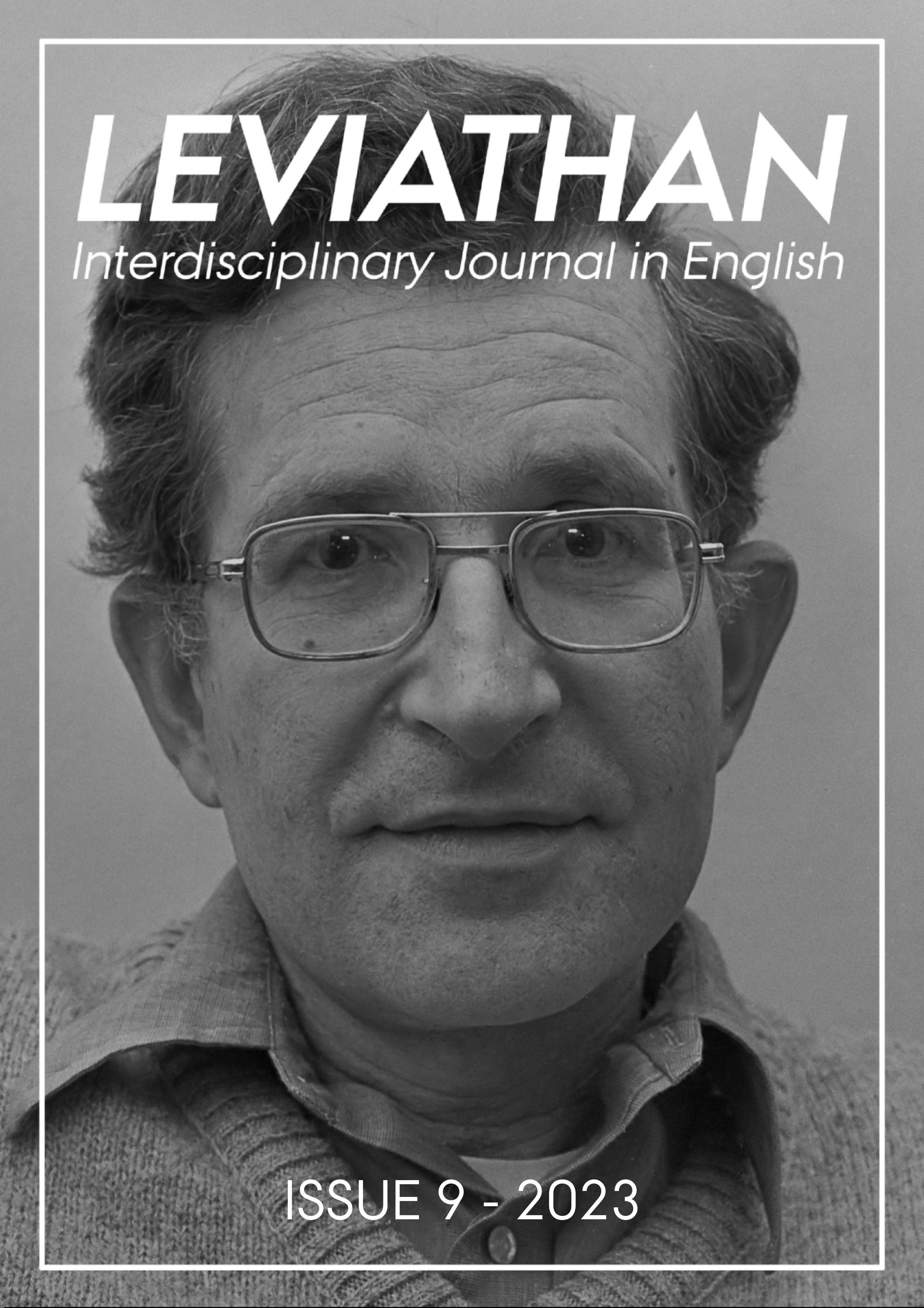Creaky Voice in American English: How Are American Women Who Use Creaky Voice Perceived?
A Literature Review
DOI:
https://doi.org/10.7146/lev92023136544Keywords:
vocal fry, perception, American English, speech evaluation, literature reviewAbstract
Vocal fry is a voice quality that can be found in different varieties of English and is used by many different speakers. Nonetheless, it is considered an emerging female voice quality that impairs their work opportunities. The study of the perception of vocal fry has gained attention in the last few years. However, there is a lack of literature reviews comparing the speech evaluations done for vocal fry. In this article eight papers were compared and evaluated. This article not only demonstrated how important the choice of voice sample, evaluator and methodology is to the outcome of the findings but also references possible consequence the choice of an artificial vocal fry and free speech had on the perception of vocal fry in American English.
References
Abdelli-Beruh, Nassima B., Lesley Wolk, and Dianne Slavin. 2014. ‘Prevalence of Vocal Fry in Young Adult Male American English Speakers’. Journal of Voice 28 (2): 185–90. doi:10.1016/j.jvoice.2013.08.011.
Anderson, Rindy C., Casey A. Klofstad, William J. Mayew, and Mohan Venkatachalam. 2014. ‘Vocal Fry May Undermine the Success of Young Women in the Labor Market’. PLOS ONE 9 (5): e97506. doi:10.1371/journal.pone.0097506.
Bayard, Donn, Ann Weatherall, Cynthia Gallois, and Jeffery Pittam. 2001. ‘Pax Americana? Accent Attitudinal Evaluations in New Zealand, Australia and America’. Journal of Sociolinguistics 5 (1): 22–49. doi:10.1111/1467-9481.00136.
Chao, Monika, and Julia R. S. Bursten. 2021. ‘Girl Talk: Understanding Negative Reactions to Female Vocal Fry’. Hypatia 36 (1): 42–59. doi:10.1017/hyp.2020.55.
Conner, Katie. 2022. ‘Creaky, She Spoke: Examining F0, Vocal Creak, and Perceptions of Young Women’s Professionalism’. University of Pennsylvania Working Paper in Linguistics. The Ohio State University, September 19. https://repository.upenn.edu/pwpl/vol28/iss2/4.
Dallaston, Katherine, and Gerard Docherty. 2020. ‘The Quantitative Prevalence of Creaky Voice (Vocal Fry) in Varieties of English: A Systematic Review of the Literature’. PLOS ONE 15 (3): e0229960. doi:10.1371/journal.pone.0229960.
Gallena, Sally K., and James A. Pinto. 2021. ‘How Graduate Students With Vocal Fry Are Perceived by Speech-Language Pathologists’. Perspectives of the ASHA Special Interest Groups 6 (6): 1554–65. doi:10.1044/2021_PERSP-21-00083.
Hornibrook, Jeremy, Tika Ormond, and Margaret Maclagan. 2018. ‘Creaky Voice or Extreme Vocal Fry in Young Women’. New Zealand Medical Journal 131 (1486): 36–40.
Kalin, Rudolf, and Donald S. Rayko. 1978. ‘Discrimination in Evaluative Judgments against Foreign-Accented Job Candidates’. Psychological Reports 43 (3): 1203–9. doi:10.2466/pr0.1978.43.3f.1203.
Kinzler, Katherine D., Kristin Shutts, Jasmine DeJesus, and Elizabeth S. Spelke. 2009. ‘Accent Trumps Race in Guiding Children’s Social Preferences’. Social Cognition 27 (4): 623–34. doi:10.1521/soco.2009.27.4.623.
Laver, John. 1980. The Phonetic Description of Voice Quality. Cambridge: Cambridge University Press.
Ligon, Claire, Carrie Rountrey, Noopur Vaidya Rank, Michael Hull, and Aliaa Khidr. 2019. ‘Perceived Desirability of Vocal Fry Among Female Speech Communication Disorders Graduate Students’. Journal of Voice 33 (5): 805.e21-805.e35. doi:10.1016/j.jvoice.2018.03.010.
Lindemann, Stephanie. 2003. ‘Koreans, Chinese or Indians? Attitudes and Ideologies about Non-Native English Speakers in the United States’. Journal of Sociolinguistics 7 (3): 348–64. doi:10.1111/1467-9481.00228.
Oliveira, Gisele, Ashira Davidson, Rachelle Holczer, Sara Kaplan, and Adina Paretzky. 2016. ‘A Comparison of the Use of Glottal Fry in the Spontaneous Speech of Young and Middle-Aged American Women’. Journal of Voice 30 (6): 684–87. doi:10.1016/j.jvoice.2015.08.015.
Parker, Michelle A., and Stephanie A. Borrie. 2018. ‘Judgments of Intelligence and Likability of Young Adult Female Speakers of American English: The Influence of Vocal Fry and the Surrounding Acoustic-Prosodic Context’. Journal of Voice 32 (5): 538–45. doi:10.1016/j.jvoice.2017.08.002.
Pointer, Natalie Foulks, Miriam van Mersbergen, and Chaya D. Nanjundeswaran. 2022. ‘Listeners’ Attitudes Towards Young Women With Glottal Fry’. Journal of Voice, October 10. doi:10.1016/j.jvoice.2022.09.007.
Rhodan, Maya. 2014. ‘3 Speech Habits That Are Worse Than Vocal Fry in Job Interviews’. Time, April 6, 2014. https://time.com/2820087/3-speech-habits-that-are-worse-than-vocal-fry-in-job-interviews/.
Taylor, Bryn, Karen Wheeler-Hegland, and Kenneth J. Logan. 2022. ‘Impact of Vocal Fry and Speaker Gender on Listener Perceptions of Speaker Personal Attributes’. Journal of Voice, November 16. doi:10.1016/j.jvoice.2022.09.018.
Uttley, J. 2019. ‘Power Analysis, Sample Size, and Assessment of Statistical Assumptions—Improving the Evidential Value of Lighting Research’. LEUKOS 15 (2–3): 143–62. doi:10.1080/15502724.2018.1533851.
Wolf, Naomi. 2015. ‘Young Women, Give up the Vocal Fry and Reclaim Your Strong Female Voice’. The Guardian, July 24, 2015, sec. Opinion. https://www.theguardian.com/commentisfree/2015/jul/24/vocal-fry-strong-female-voice.
Yuasa, Ikuko Patricia. 2010. ‘Creaky Voice: A New Feminine Voice Quality for Young Urban-Oriented Upwardly Mobile American Women?’ American Speech 85 (3): 315–37. doi:10.1215/00031283-2010-018.
Downloads
Published
How to Cite
Issue
Section
License
Copyright (c) 2023 Leviathan: Interdisciplinary Journal in English

This work is licensed under a Creative Commons Attribution-NonCommercial-NoDerivatives 4.0 International License.
Attribution-NonCommercial-NoDerivatives 4.0 International (CC BY-NC-ND 4.0)
You are free to share (copy and redistribute the material in any medium or format).
However:
You may not use the material for commercial purposes.
You must give appropriate credit, provide a link to the license, and indicate if changes were made. You may do so in any reasonable manner, but not in any way that suggests the licensor endorses you or your use.
If you remix, transform, or build upon the material, you may not distribute the modified material.
You may not apply legal terms or technological measures that legally restrict others from doing anything the license permits.





